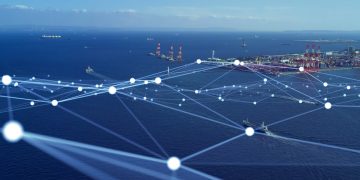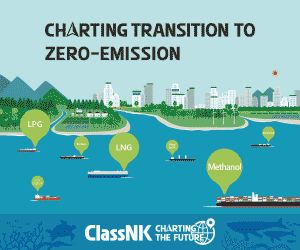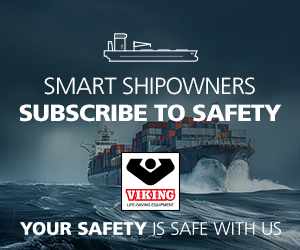In the following article, Dr. Wesley Tucker, Consultant Scientist, TCI Scientific explains the risk of Enclosed Space Incidences and advises how to understand and detect common ship gasses, cargoes that produce or deplete them, and ways they can be detected – all in the spirit of honoring the new regulations effective from 20116 and increasing safety standards.
In the modern day shipping industry there sadly remains the stubborn problem of closed space incidences which often take lives. This is especially regretful considering recent advances in preventative technologies such as portable gas detection and personal protective equipment. It is therefore promising that the IMO’s Maritime Safety Committee (MSC) has approved SOLAS regulation XI-1/7, which mandates ships to carry gas detecting equipment which is capable of determining hydrogen sulphide, carbon monoxide, oxygen, and flammable gasses prior to closed space entry. Notice the operative word prior, which importantly implies the necessity for pump facilitated remote detection as opposed to belt worn personal gas alarms. The regulation and its accompanying guidance are written for all ship types and highlight the hazards of dangerous packaged goods, liquid and solid bulk cargos, nitrogen gas inerting, oxygendepleting cargo, and fumigations. The now voluntary SOLAS XI-1/7 will enter into mandatory force on 1st July, 2016, but has been voluntarily implemented already by the Maritime and Port authority for Singaporean flagged vessels starting 1st July, 2015. Importantly, the regulation references the accompanying documents MSC.1/Circ.1477 and resolution A, 1050(27), which provide guidance for the selection of instruments and protocol for enclosed space entry, respectively. This development is a positive step towards decreasing closed space incidences, but will only have teeth with proper implementation and an increased understanding of closed space gasses. Hence, we herein discuss common ship gasses, cargoes that produce or deplete them, and ways they can be detected – all in the spirit of honoring the new regulations and increasing safety standards.
Dangerous Gasses and Oxygen Depletion
Because the source of individual gasses could be different depending on the situation (i.e. carbon dioxide could come from either combustion, self-heating, or inerting), it is somewhat difficult to draw categories for the common closed space gasses on ships. It should also be realized that toxicity varies wildly between individuals making threshold levels difficult to set accurately. Furthermore, life sustaining oxygen is in a category of its own and is probably the most important gas to consider especially when one realizes its hand and hand relationship with the many gasses which displace it. Nonetheless, the following table classifies sixteen gasses which are common to ship spaces in the interest of providing context. Gasses that derive from volatile organic chemicals (i.e. benzene, plastics precursors, alcohols) and fuels which are relevant to tankers are left off the table because they are too numerous to summarize here, but it should be mentioned that as a general category these substances are more often than not some combination of toxic, flammable, and carcinogenic. Carcinogenicity is not shown as a category in the below table because the gasses on this list are not known to be carcinogenic.
Instead, the column categories reference other important United States Occupational Safety and Health Association (OSHA) standards as benchmarks, with units conventionally measured in parts per million (ppm) with the exception of oxygen which is measured in percent. The gas attributes listed in this table are important from a health and safety perspective for various reasons and should be understood by crew as best as reasonably possible:
Time Weighted Average (TWA)
Described by OSHA as: “An employee’s exposure to any substance shall not exceed the 8- hour Time Weighted Average given for that substance any 8-hour work shift of a 40-hour work week”. To calculate TWA, one would measure gas levels for several time points over a 8 hour period and take the average, which should not exceed the limit on any day of a 40 hour week.
OSHA Ceiling
Also known as Short Term Exposure Limit (STEL), this is described by OSHA as a value that: “Shall at no time exceed the exposure limit given for that substance. If instantaneous monitoring is not feasible, then the ceiling shall be assessed as a 15-minute time weighted average exposure which shall not be exceeded at any time during the working day”. Hence, when ceiling levels are detected, no length of exposure time is considered safe.
OSHA Immediately Dangerous to Life or Health (IDLH)
This high level threshold is described by OSHA as: “Any condition that poses an immediate or delayed threat to life or that would cause irreversible adverse health effects or that would interfere with an individual’s ability to escape unaided from a permit space.” [29 CFR 1910.146]. In other words, this number is a rough estimation of the ‘incapacitating’ concentration where the affected person would not physically have the ability to attempt escape.
Specific Gravity (SG)
Defined for gasses as the ratio of the density of the gas to the density of the air – meaning that gasses with an SG below 1 are lighter than air and those above 1 are heavier. This is important on ships because heavy gasses may settle at lower portions of spaces and vice versa. Given that some relevant gases from the table are substantially heavier or lighter than air (i.e. nitrogen dioxide or hydrogen), it should be easy to imagine sub-sections of closed spaces accumulating higher concentrations, and thus a need to check levels in zones and sections where appropriate.
Smell Threshold
The terms smell or odor threshold are most often used to mean detection threshold, which identifies the concentration at which 50 percent of a human panel can identify the presence of an odor or odorant without characterizing the stimulus. Smell perception, just like toxicity, varies wildly among individuals. Odor thresholds can greatly exceed toxic levels and some gasses have no inherent smell without additives or contaminants. It is therefore no surprise that safety guidance always states that the assessment of gas by smell is an illegitimate detection practice.
Cargoes That Affect Atmospheres
Certainly the most prominent causes of dangerous gas levels relate directly or indirectly to cargos in holds or tanks. Obvious exceptions to this are: 1) Atmosphere changes which occur in ballast tanks due to biological oxygen depletion or methane formation, 2) Gasses that result from fires or reactions, or 3) welding gasses such as acetylene – all of which should not be discounted. Nevertheless, with cargo related incidences being a persistent problem, we herein list common cargo categories that have a high likelihood of producing gas or depleting oxygen. The list is far from exhaustive and instead serves as a general overview.
Agricultural: i.e. grains, oilseeds, copra, wood, fish products, guano, fumigation gasses – respiration in the plant/animal materials themselves may deplete oxygen while the microorganisms that inhabit them may further altar the atmosphere. Additionally, one should realize that fumigation gasses, such as those used to treat some of these products during a voyage, were originally selected because of their particularly high toxicity and ability to pervade spaces as an effective fumigant. In fact, the history of fumigants coincides with that of chemical weapons and some gasses have been used for both purposes. In general, phosphine is used to fumigate bulk stored grains while methyl bromide is used to fumigate containers.
Ores/Concentrates: i.e. zinc blende (zinc concentrate), Directly Reduced Iron (DRI) – these cargoes may produce hydrogen sulphide, hydrogen, and deplete oxygen. Unfortunately, the exact category and composition of concentrates is often ambiguous or misdeclared, so a professional characterization of the cargo may be necessary to really understand the relative dangers.
Dry Fuels: i.e. coal, lignite – these cargoes may produce methane, carbon monoxide (when heating) and other volatile organic gasses, and are also capable of oxygen depletion.
Dry Chemicals: i.e. “NPK” fertilizers (Ammonium and/or nitrate based fertilizers) – these cargoes may produce ammonia, nitrogenous gasses, chlorine, and hydrogen chloride if heated, and may also deplete oxygen. It should generally be understood that nitrate is oxidizing and ammonium is unstable, so knowing the relative proportions of these components in the cargo formulation is essential.
Liquid Organic Chemicals/ Fuels: i.e. phenol, Vinyl Chloride Monomer (VCM), naptha – these cargoes produce volatile organic chemical fumes which are most likely toxic, flammable/explosive, and/or carcinogenic. Additionally, the atmospheres above chemical cargoes are often purged with inert gas to mitigate oxidation and flammability. When one realizes that a safe minimum of oxygen is considered to be 19.5% while atmospheric oxygen is approximately 21%, it is easy to see how inert gasses could make a space unsafe.
Liquid Inorganic Chemicals: i.e. ammonia, hydrochloric acid – may produce ammonia and hydrogen chloride gas which are both toxic.
Detection of Gas Levels Prior to Entry
As mentioned in the intro of this article, it is essential that dangerous gasses and oxygen levels are revealed before a space is entered, which is why the Maritime Safety Committee (MSC) made sure the equipment guidance (MSC.1/Circ.1477) calls for electrochemical sensor based detectors that can sample from a distance. Such detectors are widely available from safety equipment suppliers and typically include sensors for the four gasses listed in the regulation – oxygen, carbon monoxide, hydrogen sulfide, and explosive gas. The unit must include a pump and extension tube to sample remotely through portals such as sounding pipes, and should be the type that can not only alarm at certain thresholds, but also determine an actual gas concentration value.
In addition to the portable sensor based detectors called for in the regulations, colorimetric detection tubes are also available for a surprisingly vast range of gasses in wide ranges of concentrations. Instead of being based on an electrochemical sensor, the tubes work instead by reacting with the gas to produce a color that is proportional to the concentration when sampled by a calibrated pump. These types of detectors, which are well known by their brand names Drager (Germany) and Gastec (Japan), are disposable, inexpensive, convenient and precalibrated. Similar to the electronic detectors, they can be extended into remote spaces with accessory tubes. The tubes are excellent for detecting suspected gasses that are not covered by the electronic unit, while some tube types can even identify unknown gasses from a panel. Copious information is available online for both detector types.
Personal Protection From Gaseous Dangers
Incidences have been documented where crew entered dangerous spaces with a simple filter type mask specific for particulates or certain gas types. Not only does this practice fail to protect against unexpected gas types, but even if the appropriate filter type was selected, it would be impossible to estimate when it will reach capacity. Worse yet, no mask provides assistance regarding depleted oxygen. This practice should therefore be considered next to worthless as a safety measure, and these type of cartridge filter face masks should be used only for applying epoxies, cleaning, loading/discharging, or inspecting tanks after the space has been confirmed safe. Spaces which do have the potential to have atmospheric dangers cannot be entered
without a self-contained breathing apparatus (SCBA), and even this should be avoided unless it is a dire situation such as a rescue. Imagine entering a cargo hold wearing the last remaining SCBA and breaking a leg while in the space, only to wait for the inevitable. When the harsh realities of rescue are considered, an ounce of prevention truly is worth a pound of cure, and as we described above – an ounce of prevention for closed space incidences takes the form of inexpensive, accurate, practical, and user friendly equipment that should be used judiciously.
Written by Dr. Wesley Tucker
Consultant Scientist, TCI Scientific
Above article has been initially published in The Swedish P&I Club website and it is reproduced here with their kind permission.
The views presented hereabove are only those of the author and not necessarily those of SAFETY4SEA and are for information sharing and discussion purposes only.
[divider]
 Dr. Wesley Tucker is an independent consultant specializing in the investigation of incidences associated with dry, liquid, and cold bulk cargoes. Wesley’s background in analytical methods development lends itself to the accurate implementation and interpretation of the sampling and testing that is too often inappropriately used to judge the materials in question. Experiences thus far have been in the areas of minerals and concentrates, dry and liquid chemicals, food products, and health and safety. Services are currently applied to the shipping industry with possible expansion of scope in the future.
Dr. Wesley Tucker is an independent consultant specializing in the investigation of incidences associated with dry, liquid, and cold bulk cargoes. Wesley’s background in analytical methods development lends itself to the accurate implementation and interpretation of the sampling and testing that is too often inappropriately used to judge the materials in question. Experiences thus far have been in the areas of minerals and concentrates, dry and liquid chemicals, food products, and health and safety. Services are currently applied to the shipping industry with possible expansion of scope in the future.


































































Thank you Dr. Tucker for your very detailed article highlighting some very important aspects/characteristics of gases, especially those emanating from cargoes, of which many crew members aboard merchant ships are unaware.